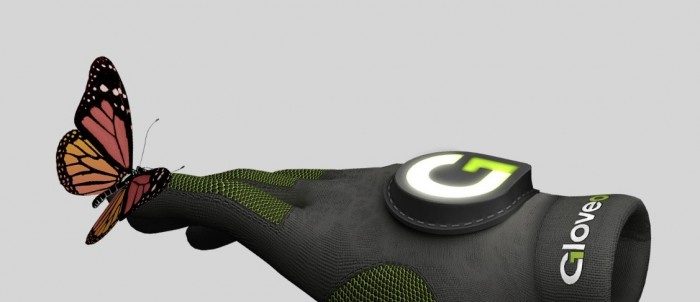There’s a coming tide of VR peripherals on the horizon, and haptic gloves represent a compact, and (relatively) cost-efficient solution among the multi-pronged challenge that is VR input.
While infrared depth cameras like Leap Motion and Microsoft Kinect can facilitate some pretty convincing skeletal tracking nowadays, allowing the user to enter virtual spaces as never before, we find ourselves asking this: what about feeling inside those spaces? We take a look at two different haptic gloves approaches to determine just that.
See Also: Video Preview: Manus Machina’s Wireless VR Glove Looks Promising, Headed to E3 2015
Gloveone
Still at the crowdfunding stage but quickly gaining traction among would-be backers, Gloveone was created to enable users to feel and touch virtual objects using tiny actuators, 10 in total for each glove.
Data from these ‘haptic points’ are transferred either by a low-latency USB connection, or via the glove’s Bluetooth module that sips from an 800mAh onboard battery, giving the glove an alleged 4 hours of battery life.
The Spain based NeuroDigital Technologies says the actuators on Gloveone “vibrate independently at different frequencies and intensities, reproducing accurate touch sensations.” The key words here are ‘touch sensations’, because Gloveone doesn’t really reproduce touch itself, but an approximative force that acts as a placeholder for touch-based interactions.
Gloveone Kickstarter Campaign
The Gloveone doesn’t entirely rely on its 9-axis IMU hidden behind the logo though, but rather uses it in concert with commercial sensors including Leap Motion and Intel RealSense. Because hand tracking isn’t perfect yet, this gives the user a more stable interaction to count on when ‘touching’ virtual objects.
At $199 for single glove, and $395 for two, getting to be apart of the early stages of VR touch interaction doesn’t sound nearly as expensive as we thought, especially if you already have a Leap Motion on hand (no pun intended).
Hands Omni
Virtuix, as in the same company that produces the Virtuix Omni VR treadmill, have put a lot of focus on VR locomotion, but recently the company has delved into haptic gloves as well. Virtuix sponsored a team of students at Rice University to create a haptic glove prototype, the very punny Hands Omni (get it, hands on me).
To approximate touch, the glove uses inflatable mini-bladders that give a sense of pressure to the hand when touching a virtual objects. How effective this is compared to mini-rumble actuators, we can’t say for sure, but the team maintains that the Hands Omni is still at “Google Cardboard level” in terms of development and miniaturization.
The Hands Omni is very interesting in its use of bladders to create an actual sense of physical pressure on the hand—a closer one-to-one than what amounts to mini-rumble packs—but in a device that relies on air compression to drive interactions, tightening up latency will still a very large hurdle to overcome if the project wants to keep moving forward.
Although a promising start, Virtuix says they won’t be diverting any resources from their other projects at the moment “or have any plans to commercialise it at this time.”
As the aphorism goes “seeing is believing, but touching is truth.”




